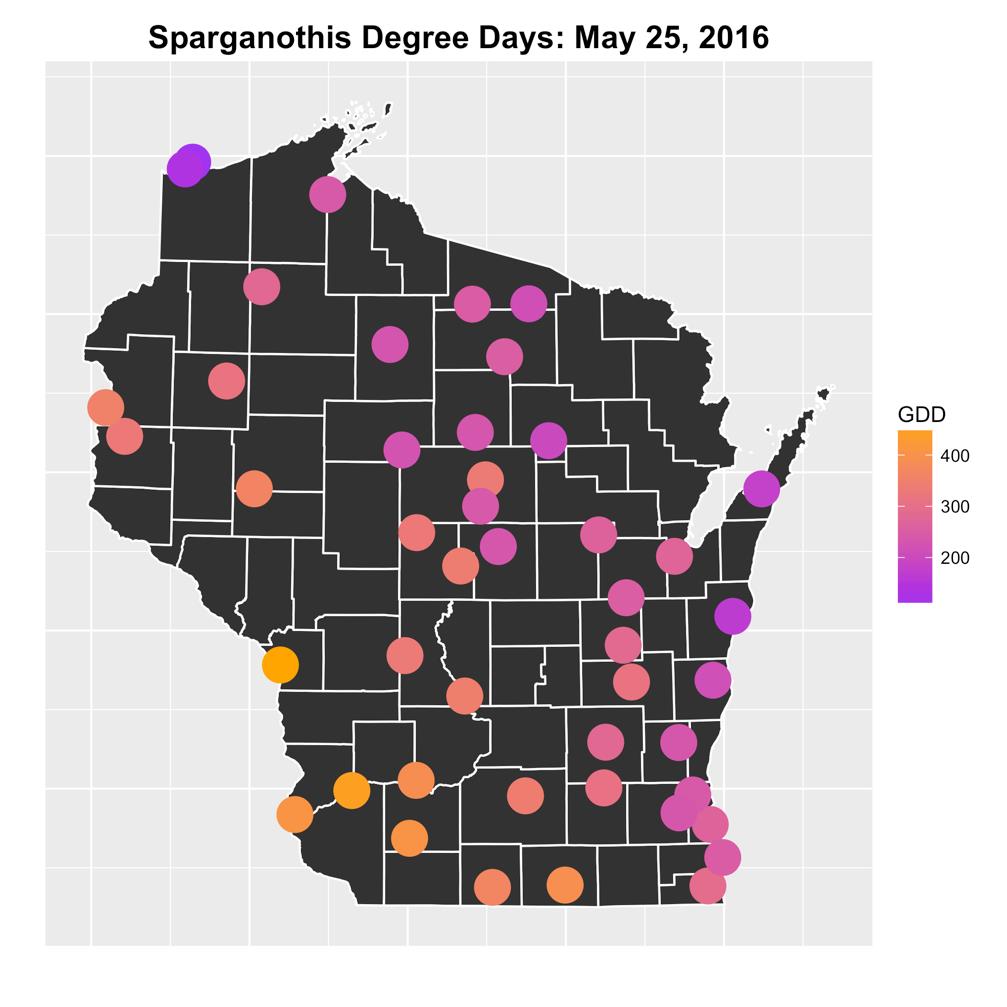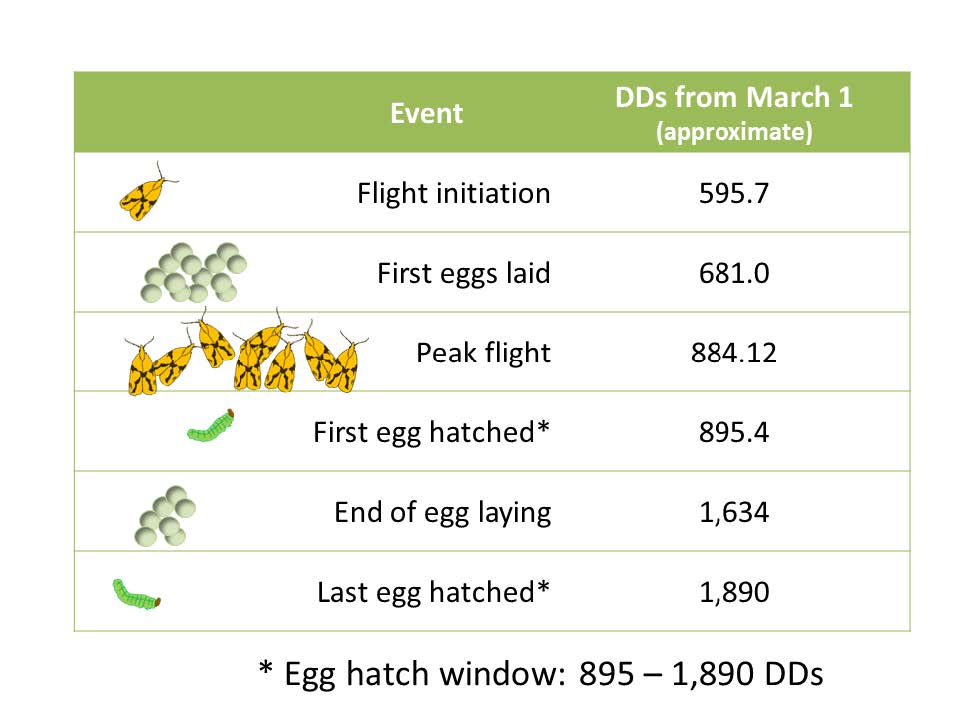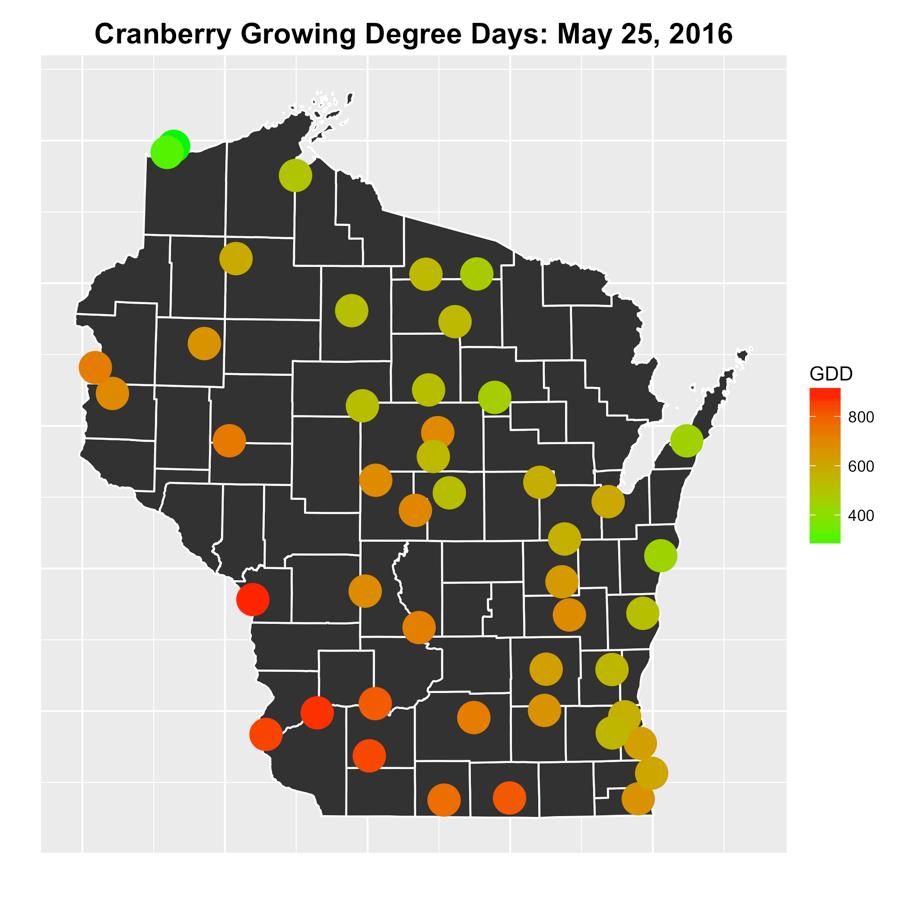Upcoming Degree-Day Benchmarks for Sparganothis and Degree-Day Maps: May 25, 2016
In these warmer days of spring and summer, degree-days can accumulate pretty quickly. For example, each of the last few days with lows in the 50s and highs near 80 degrees accrued somewhere around 20 degree-days. You can see this easily in the degree-day look up table that the Steffan lab created for Sparganothis fruitworm (http://labs.russell.wisc.edu/steffan/files/2013/11/Degree-day-look-up-table.pdf).
The map below shows that Sparganothis degree-days are ranging across the state from a low of 105 DD to a high of 460 DD. In central WI cranberry growing regions, we have accumulated around 350 degree-days, and flight is predicted to begin around 600 degree-days which means it is likely that flight will begin before the next degree-day update! Northern WI growers will have a bit longer to wait before it reaches this benchmark.

With that in mind, the figure below illustrates key Sparganothis benchmarks and their associated degree-day estimates. In general, insecticide applications aimed at adults can be timed for peak flight, while insecticide applications aimed at larvae are often timed for the middle of the egg-hatch window (i.e., larval emergence), depending on the insecticide being used. Compounds with long residual activity for eggs/larvae can be applied earlier in the egg-hatch period, while compounds with shorter activity generally may need to be applied near or a little after peak emergence (for Sparg, this is ~1,400 DDs).

The map below shows degree day accumulations for the cranberry plants through May 25, 2016. Throughout WI, plant degree-days ranged from a low accumulation of 255 DD to a high of 910.

The table below allows for comparison of degree-days over the last three years. Based on our observational data from the last couple of years, plants at this time will be likely in cabbage head and moving into roughneck.


